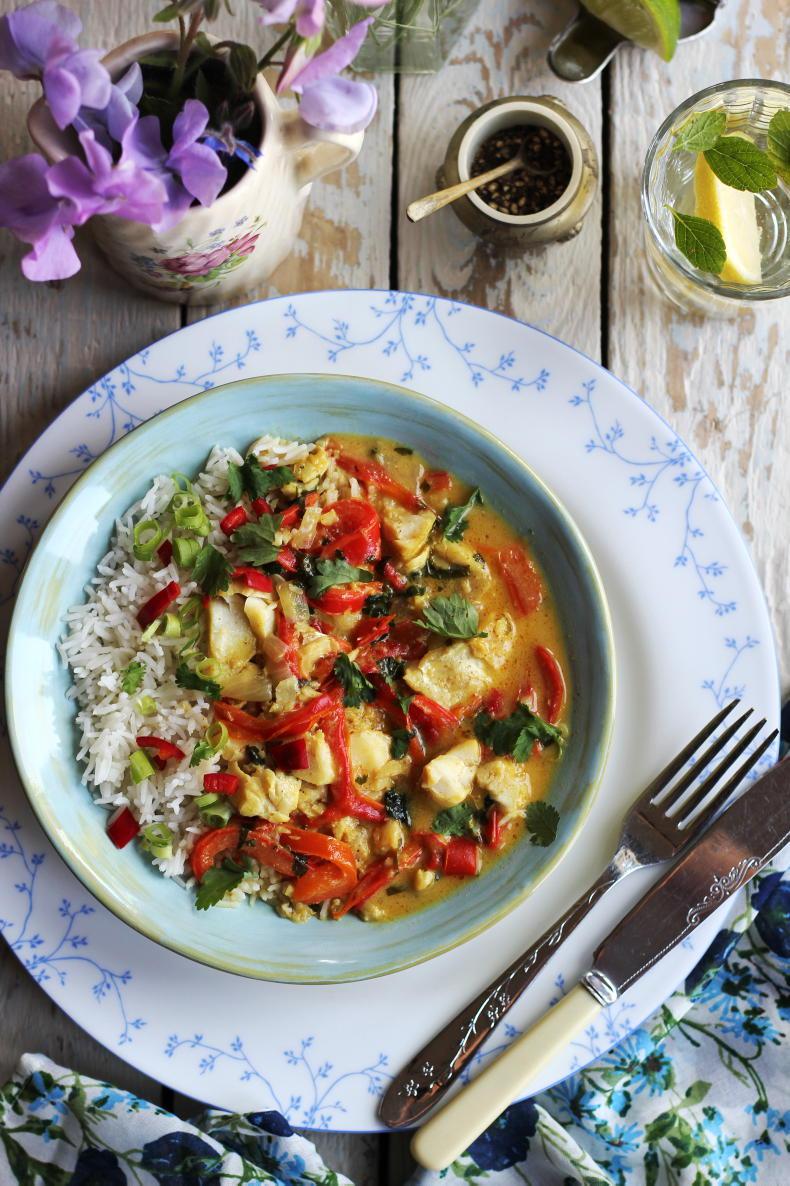A low-salt or sodium diet may be suggested for you by your doctor for a variety of reasons.
High blood pressure, renal conditions and heart failure can all benefit greatly from reducing one’s intake of salt.
Stopping the urge to sprinkle some salt over potatoes or dousing it over a piece of chicken is a sure way to decrease how much salt we’re consuming, but salt is an added ingredient to many foods on the market.
Being aware of this and reading foods labels is crucial when trying to manage one’s intake.
Salt is a cheap, effective way to preserve many foods. Most prepacked foods have a food label on the back, and many may also show a colour-coded nutritional information chart, indicating if the salt content is low (green), amber (medium) or high (red).
Highly processed foods (including sauces, gravies, packets of soup and stock cubes) normally have a high salt content, as would bacon, sausages, and other processed meats. Smoked meat and fish, olives, pickles, soy sauce and even some cheeses should also be limited or avoided when keeping tabs on one’s salt intake.
Salt can be added to the most unassuming products, such as bread or effervescent vitamin supplements, so reading the labels for anything consumed is vitally important. Even some breakfast cereals can contain high levels of salt, so check the label and choose an alternative cereal with a lower salt content if necessary.
Eating a diet rich in fresh, wholesome foods (while adapting cooking methods to seasoning food without the addition of salt) will greatly help reduce how much salt is consumed. Salt enhances the natural flavours in our foods, so cooking without it may seem a little bland at first, but there are many flavoursome ingredients to add to a dish to make the finished product more delicious.
For lower-salt sauce or soup options, in place of using stock cubes, make your own stock and pack it with lots of fresh herbs and black pepper for flavour. Fresh or dried herbs, spices, chilli, garlic, black pepper, lemon and lime juice are all aromatic options to choose from when seasoning food. If you’ve always been accustomed to salty foods, or adding salt to your meals, it may take a little time for your tastebuds to adjust. But within a week or so, you will adapt to the different flavours from the food without the addition of salt.
Spatchcock chicken with orange & rosemary butter
The fresh herbs and the citrusy oranges in this dish lend excellent flavours to the cooked chicken. Chicken prepared in this way is perfect for serving alongside potatoes and vegetables, but it can also be carved and added to a salad or packed into some bread as a delicious sandwich filler.
50g unsalted butter
1 tbsp fresh rosemary, finely chopped
1 tbsp fresh chives, finely chopped
2 large oranges
1 tsp olive oil
1 whole chicken
Freshly ground pepper
1 Preheat the oven to 200°C/fan 180°C /gas mark 6.2 First make the herb butter by combining the unsalted butter with the rosemary, chives, and the zest from one of the oranges.3 Cut the two oranges into slices. Drizzle the olive oil on a large roasting tin and add a single layer of orange slices.4 To spatchcock the chicken, place it breast side down on a work surface. Using kitchen scissors, cut down either side of the backbone. Discard the bone or pop it back into the fridge to save, if you’re planning on making some homemade stock. Turn the chicken over and press it down firmly to flatten slightly. 5 Place the chicken on top of the orange slices. Evenly cover the chicken with the herb butter, and sprinkle over a few grinds of black pepper.6 Place in the hot oven for about 1 hour 15 minutes. Once cooked through, transfer the chicken to a carving board, drizzle over some of the juices from the tin, cover with tin foil and leave to rest for a few minutes. 7 Cut the chicken into portions and serve. Coconut fish curry

Coconut fish curry.
This dish is so packed with natural, fresh flavours from the garlic, chilli, lime and coriander, you won’t even miss the addition of salt.
1 tbsp olive oil
1 onion, finely diced
2 red peppers, thinly sliced
3 cloves of garlic, crushed
1 red chilli, finely diced
1 tbsp medium curry powder
1 tin coconut milk
1 lime, juice only
450g white fish - cod or hake
Handful fresh coriander, roughly
chopped
To serve:
Basmati rice
2 scallions, finely sliced
1 red chilli, finely sliced
1 lime
1 Drizzle the olive oil into a medium-sized saucepan over a low heat. Once the oil is hot, add the onion and peppers and sauté gently for five minutes, stirring regularly.2 Increase the heat under the saucepan and stir through the garlic and chilli. Add the curry powder and continue to stir for two minutes.3 Pour in the coconut milk and squeeze in the lime juice. Stir to combine. 4 Once the sauce starts to bubble, reduce the heat to low, add the fish, cover the saucepan with a lid and leave to simmer for 20 minutes.5 In the meantime, cook the rice according to the instructions on the pack.6 When the fish is cooked through and the sauce has thickened a little, add a good handful of coriander to the pot and stir through. 7 To serve, portion out the rice and top with the fish curry. Sprinkle over some finely chopped scallions and red chilli and serve with a slice of lime on the side for squeezing over.
Read more
Nessa Robins' recipes for soothing a nauseous tummy
Home Nurse: eating well during pregnancy
A low-salt or sodium diet may be suggested for you by your doctor for a variety of reasons.
High blood pressure, renal conditions and heart failure can all benefit greatly from reducing one’s intake of salt.
Stopping the urge to sprinkle some salt over potatoes or dousing it over a piece of chicken is a sure way to decrease how much salt we’re consuming, but salt is an added ingredient to many foods on the market.
Being aware of this and reading foods labels is crucial when trying to manage one’s intake.
Salt is a cheap, effective way to preserve many foods. Most prepacked foods have a food label on the back, and many may also show a colour-coded nutritional information chart, indicating if the salt content is low (green), amber (medium) or high (red).
Highly processed foods (including sauces, gravies, packets of soup and stock cubes) normally have a high salt content, as would bacon, sausages, and other processed meats. Smoked meat and fish, olives, pickles, soy sauce and even some cheeses should also be limited or avoided when keeping tabs on one’s salt intake.
Salt can be added to the most unassuming products, such as bread or effervescent vitamin supplements, so reading the labels for anything consumed is vitally important. Even some breakfast cereals can contain high levels of salt, so check the label and choose an alternative cereal with a lower salt content if necessary.
Eating a diet rich in fresh, wholesome foods (while adapting cooking methods to seasoning food without the addition of salt) will greatly help reduce how much salt is consumed. Salt enhances the natural flavours in our foods, so cooking without it may seem a little bland at first, but there are many flavoursome ingredients to add to a dish to make the finished product more delicious.
For lower-salt sauce or soup options, in place of using stock cubes, make your own stock and pack it with lots of fresh herbs and black pepper for flavour. Fresh or dried herbs, spices, chilli, garlic, black pepper, lemon and lime juice are all aromatic options to choose from when seasoning food. If you’ve always been accustomed to salty foods, or adding salt to your meals, it may take a little time for your tastebuds to adjust. But within a week or so, you will adapt to the different flavours from the food without the addition of salt.
Spatchcock chicken with orange & rosemary butter
The fresh herbs and the citrusy oranges in this dish lend excellent flavours to the cooked chicken. Chicken prepared in this way is perfect for serving alongside potatoes and vegetables, but it can also be carved and added to a salad or packed into some bread as a delicious sandwich filler.
50g unsalted butter
1 tbsp fresh rosemary, finely chopped
1 tbsp fresh chives, finely chopped
2 large oranges
1 tsp olive oil
1 whole chicken
Freshly ground pepper
1 Preheat the oven to 200°C/fan 180°C /gas mark 6.2 First make the herb butter by combining the unsalted butter with the rosemary, chives, and the zest from one of the oranges.3 Cut the two oranges into slices. Drizzle the olive oil on a large roasting tin and add a single layer of orange slices.4 To spatchcock the chicken, place it breast side down on a work surface. Using kitchen scissors, cut down either side of the backbone. Discard the bone or pop it back into the fridge to save, if you’re planning on making some homemade stock. Turn the chicken over and press it down firmly to flatten slightly. 5 Place the chicken on top of the orange slices. Evenly cover the chicken with the herb butter, and sprinkle over a few grinds of black pepper.6 Place in the hot oven for about 1 hour 15 minutes. Once cooked through, transfer the chicken to a carving board, drizzle over some of the juices from the tin, cover with tin foil and leave to rest for a few minutes. 7 Cut the chicken into portions and serve. Coconut fish curry

Coconut fish curry.
This dish is so packed with natural, fresh flavours from the garlic, chilli, lime and coriander, you won’t even miss the addition of salt.
1 tbsp olive oil
1 onion, finely diced
2 red peppers, thinly sliced
3 cloves of garlic, crushed
1 red chilli, finely diced
1 tbsp medium curry powder
1 tin coconut milk
1 lime, juice only
450g white fish - cod or hake
Handful fresh coriander, roughly
chopped
To serve:
Basmati rice
2 scallions, finely sliced
1 red chilli, finely sliced
1 lime
1 Drizzle the olive oil into a medium-sized saucepan over a low heat. Once the oil is hot, add the onion and peppers and sauté gently for five minutes, stirring regularly.2 Increase the heat under the saucepan and stir through the garlic and chilli. Add the curry powder and continue to stir for two minutes.3 Pour in the coconut milk and squeeze in the lime juice. Stir to combine. 4 Once the sauce starts to bubble, reduce the heat to low, add the fish, cover the saucepan with a lid and leave to simmer for 20 minutes.5 In the meantime, cook the rice according to the instructions on the pack.6 When the fish is cooked through and the sauce has thickened a little, add a good handful of coriander to the pot and stir through. 7 To serve, portion out the rice and top with the fish curry. Sprinkle over some finely chopped scallions and red chilli and serve with a slice of lime on the side for squeezing over.
Read more
Nessa Robins' recipes for soothing a nauseous tummy
Home Nurse: eating well during pregnancy










SHARING OPTIONS